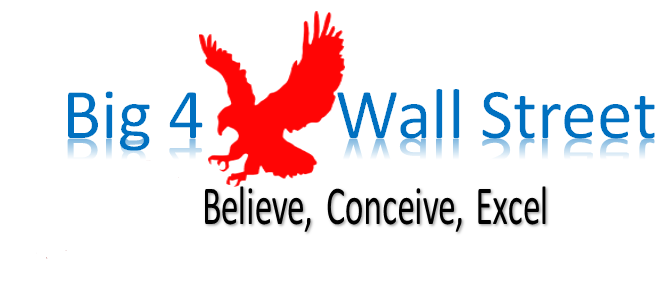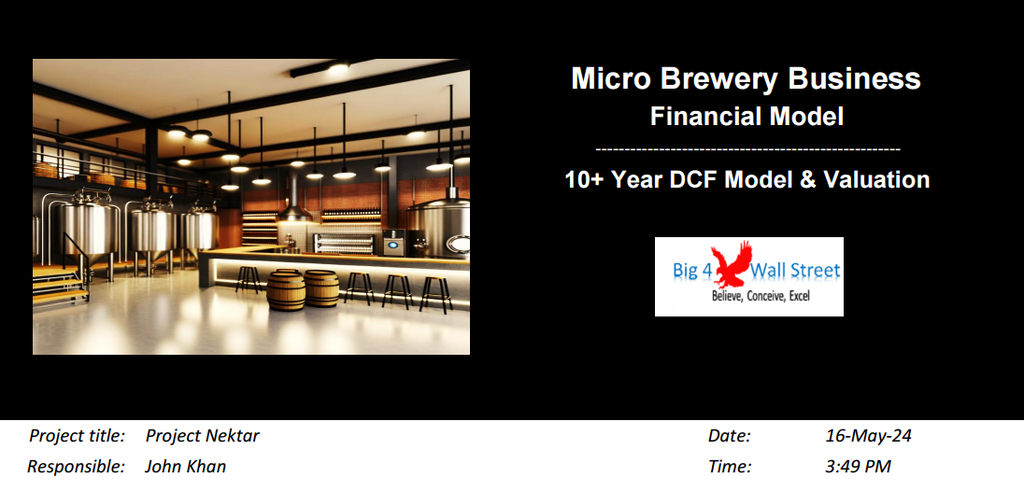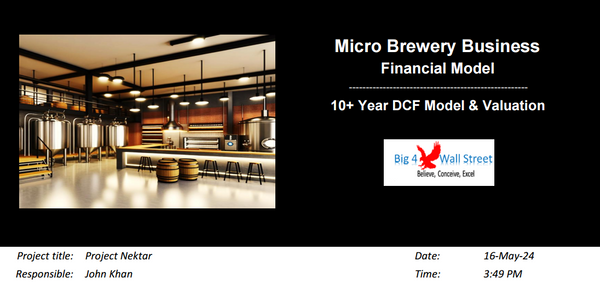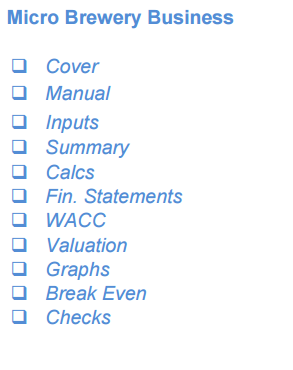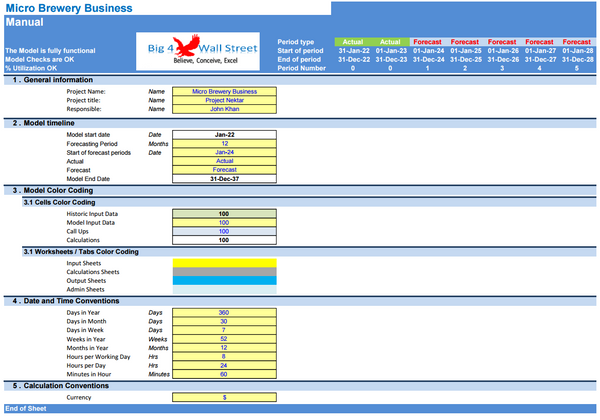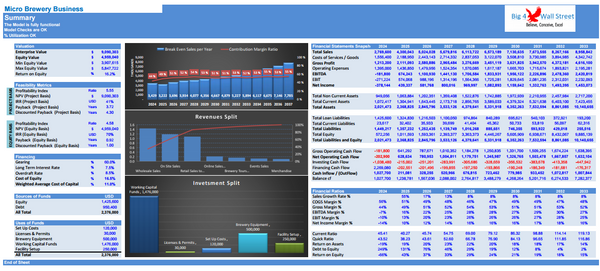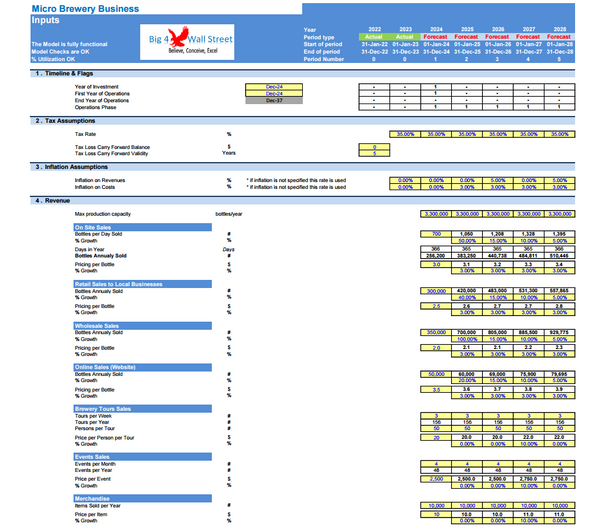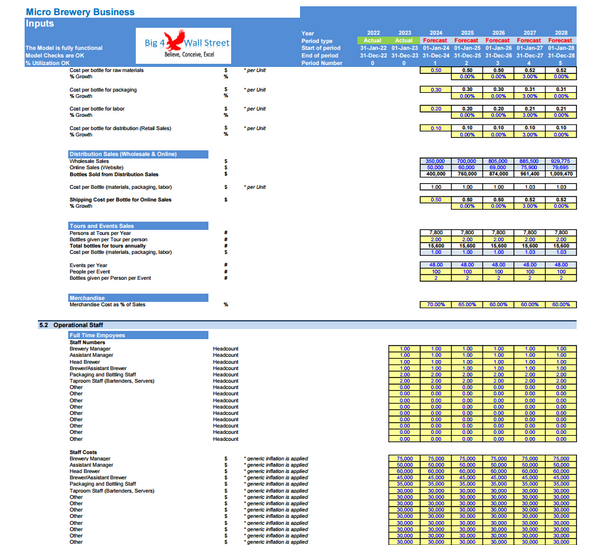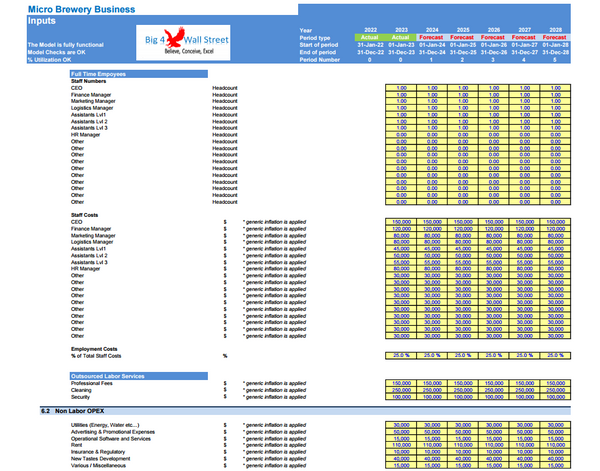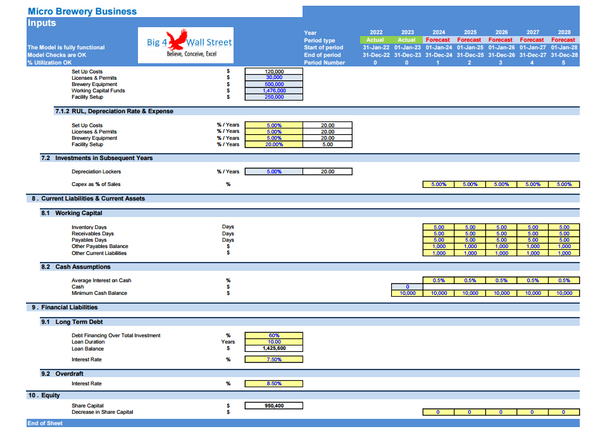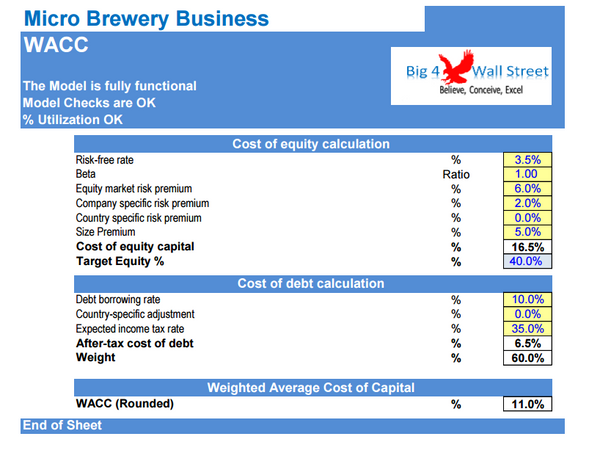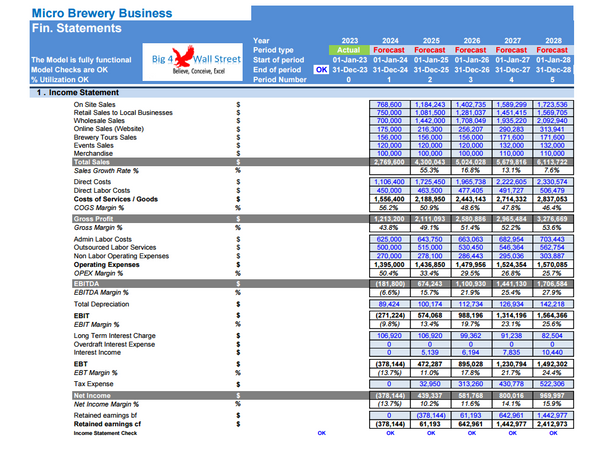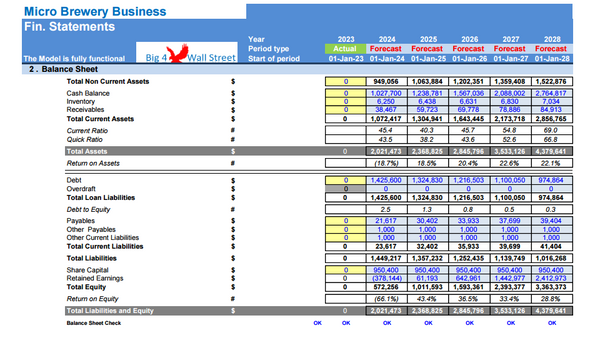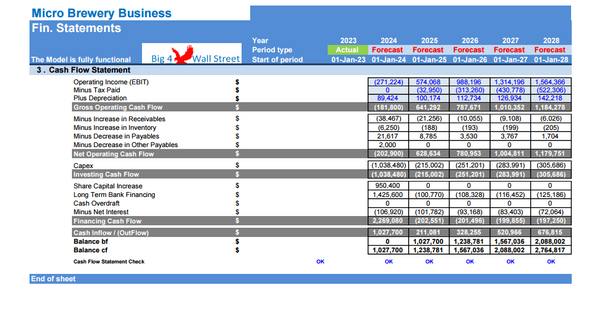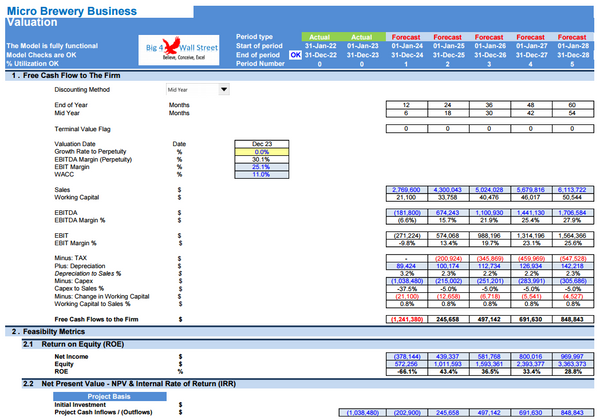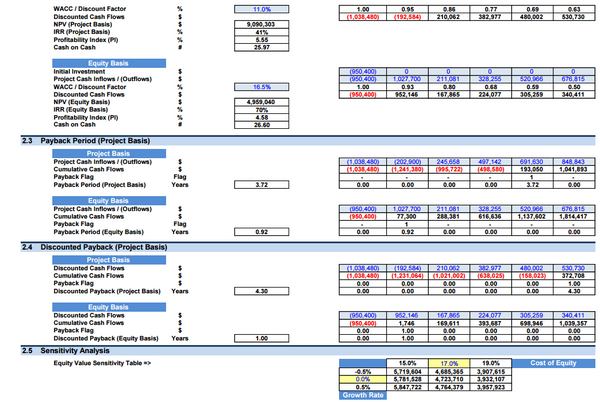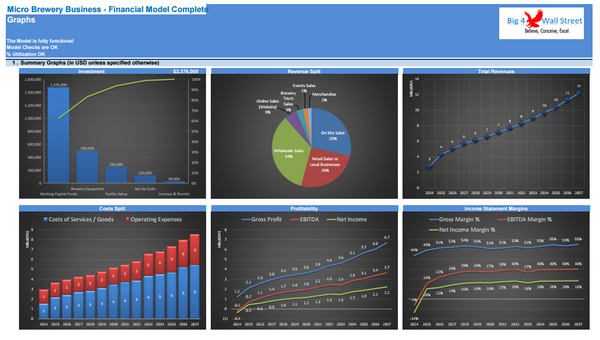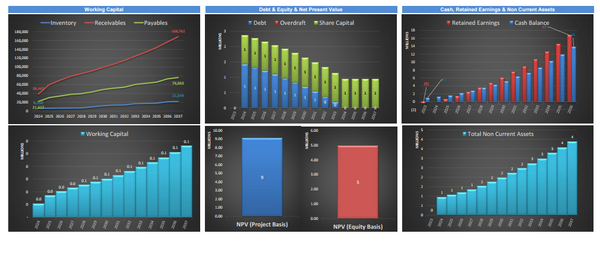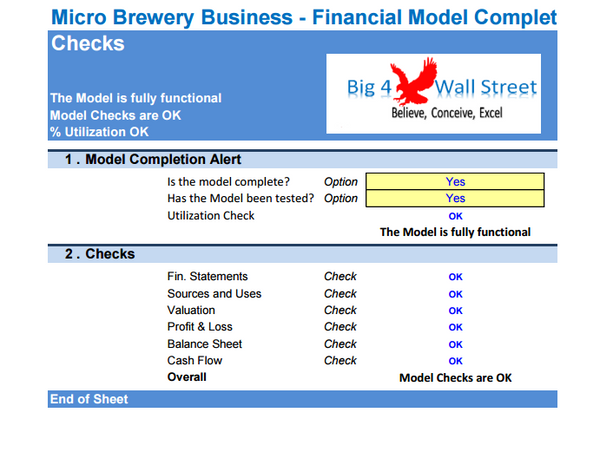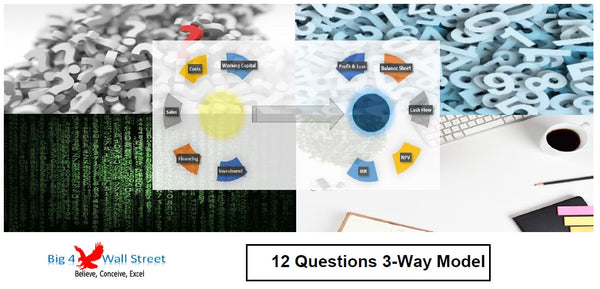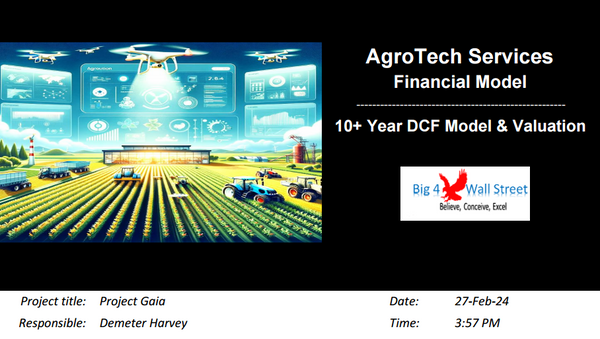Micro-Brewery Business Financial Model (10+ Yrs. DCF and Valuation)
The Micro-Brewery Business Financial Model with a 10+ Years DCF (Discounted Cash Flow) and Valuation is a comprehensive tool designed to analyze the financial aspects of a microbrewery. It includes key components such as production costs, sales projections, pricing strategies, and long-term financial valuation. This model provides insights into the financial performance and value potential of the microbrewery, enabling informed decision-making, investment assessment, and strategic planning.
Key Components:
· Capacity Utilization: Analysis of brewing capacity and its impact on production and sales.
· Sales Projections: Forecasts for beer sales across various channels such as on site and retail, wholesale and online, as well as during tours and events.
· Pricing: pricing across sales channels to maximize revenue.
· Distribution Channels: Revenue and cost analysis for different distribution methods.
· Operating Expenses: Administrative, marketing, and operational overhead costs.
· Capital Expenditures (CapEx): Initial and ongoing investments in brewing equipment and facilities.
· 10+ Years DCF and Valuation: Long-term financial projections, including DCF analysis to assess the brewery's value and ROI.
Key Benefits:
· Informed Decision Making: Provides detailed insights into cost structures, revenue streams, and profitability.
· Strategic Planning: Helps in planning production, distribution, and marketing strategies for growth.
· Profitability Analysis: Assesses the financial viability of different pricing strategies and product lines.
· Investment Appeal: A robust financial model to present to potential investors and secure funding.
